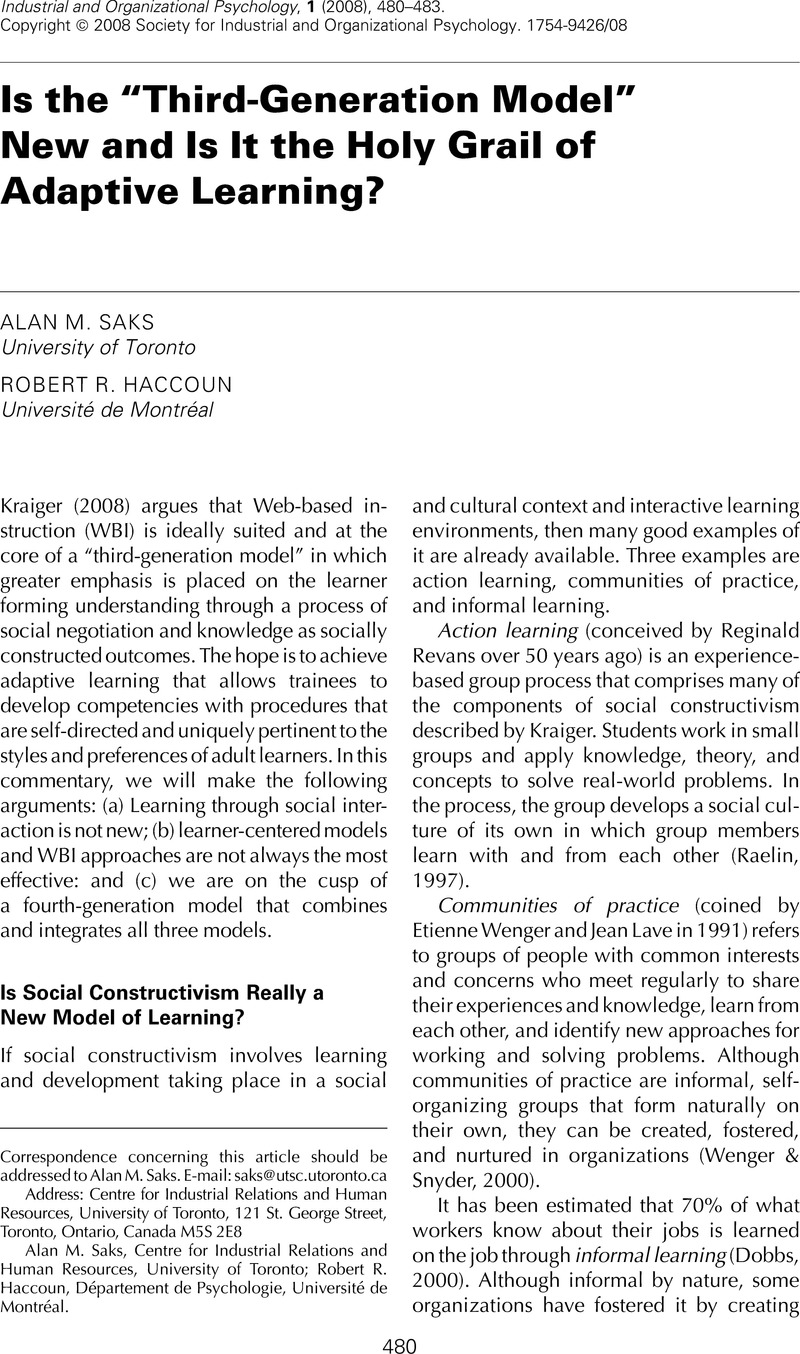Crossref Citations
This article has been cited by the following publications. This list is generated based on data provided by Crossref.
Kraiger, Kurt
2008.
Third-Generation Instructional Models: More About Guiding Development and Design Than Selecting Training Methods.
Industrial and Organizational Psychology,
Vol. 1,
Issue. 4,
p.
501.
Noe, Raymond A.
Tews, Michael J.
and
McConnell Dachner, Alison
2010.
Learner Engagement:A New Perspective for Enhancing Our Understanding of Learner Motivation and Workplace Learning.
Academy of Management Annals,
Vol. 4,
Issue. 1,
p.
279.
Noe, Raymond A.
Tews, Michael J.
and
McConnell Dachner, Alison
2010.
Learner Engagement:A New Perspective for Enhancing Our Understanding of Learner Motivation and Workplace Learning.
Academy of Management Annals,
Vol. 4,
Issue. 1,
p.
279.
Garavan, Thomas N.
Heneghan, Sinead
O’Brien, Fergal
Gubbins, Claire
Lai, Yanqing
Carbery, Ronan
Duggan, James
Lannon, Ronnie
Sheehan, Maura
and
Grant, Kirsteen
2019.
L&D professionals in organisations: much ambition, unfilled promise.
European Journal of Training and Development,
Vol. ahead-of-print,
Issue. ahead-of-print,
Archana, P. V.
and
Gerald, J. Wilfred Angello
2024.
Exploring the Link Between Emotional Intelligence and Training Efficacy from Supervisor’s Rated Performance in the Retail Industry.
SDMIMD Journal of Management,
p.
43.





